
Hexastylis Raf. (Aristolochiaceae)
Hexastylis is represented by ten species in North Carolina. Only Hexastylis naniflora is listed at the federal level (Fed T, S3 G3). Hexastylis contracta is currently state listed (State E, S1 G3). Hexastylis rhombiformis was state listed as threatened (State T, S2 G2), but was recently reassessed (S3 G3) and downlisted. It continues to be tracked as State SR-L and remains a Federal Species of Concern. No other taxa are listed or proposed for listing.
Key to Hexastylisin North Carolina
Key adapted from Blomquist (1957 [Brittonia]), Gaddy (1987 [Castanea]), Whittemore and Gaddy (1997 [FNA]), Weakley (2008), and Gaddy (2011 [Phytoneuron]). Photos by Krings, unless otherwise indicated. Line drawings from Britton & Brown (1913; An illustrated flora of the northern United States, Canada and the British Possessions). Maps courtesy of USDA PLANTS and the North Carolina Natural Heritage Program.
















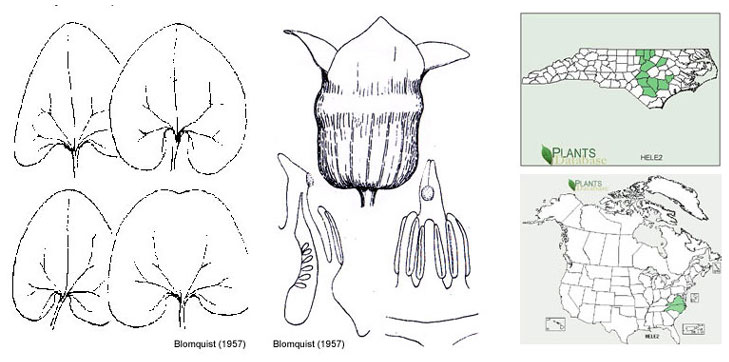







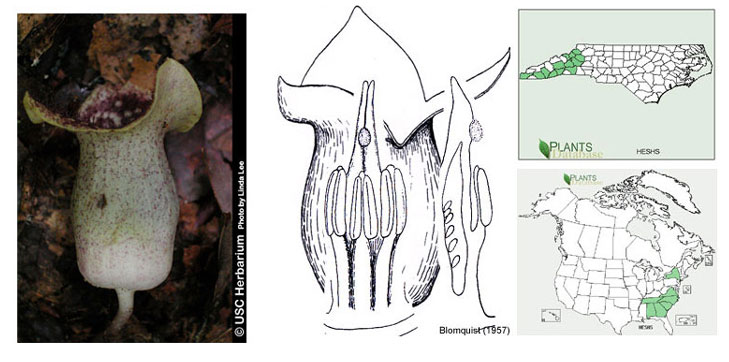















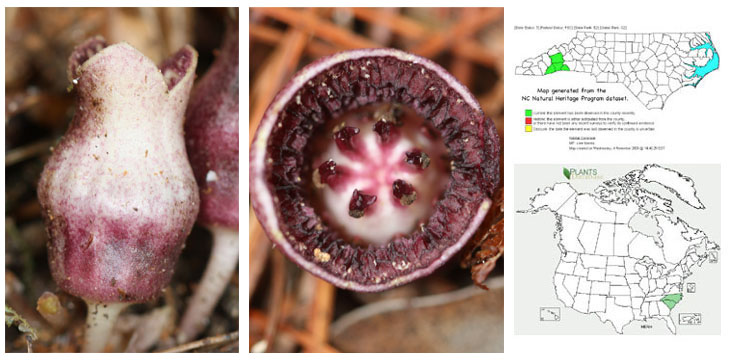























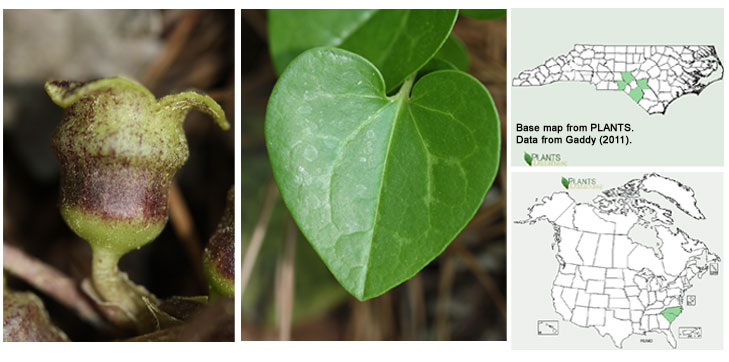







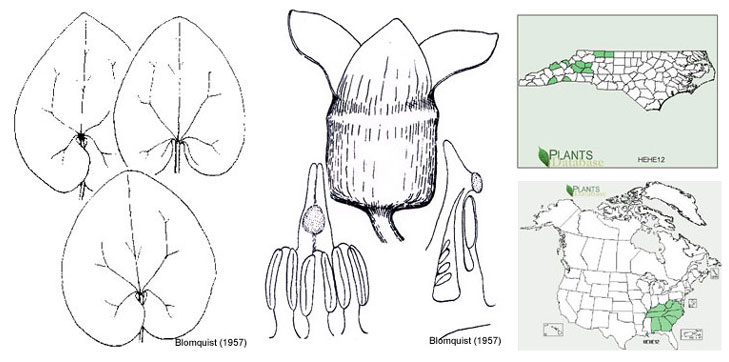















Federally listed taxon—Hexastylis naniflora (Fed T, State T | S3 G3 | NHP | USFWS| Five-year review)
Habitat. "Acidic sandy loam soils along bluffs and nearby slopes, hillsides and ravines, in boggy areas adjacent to creekheads and streams. Soil type is the most important habitat requirement (Pacolet, Madison, or Musella types)" (USFWS)
Status. NHP recognizes seventy-six populations extant in North Carolina, of which forty-one are judged of good viability (as of Sep 2010). In the five-year review (2011; see above), the USFWS recognized 108 populations. This species may be a candidate for delisting in the future.
Threats. Residential/industrial development, conversion of woodlands to pasture, reservoir construction, herbicides.
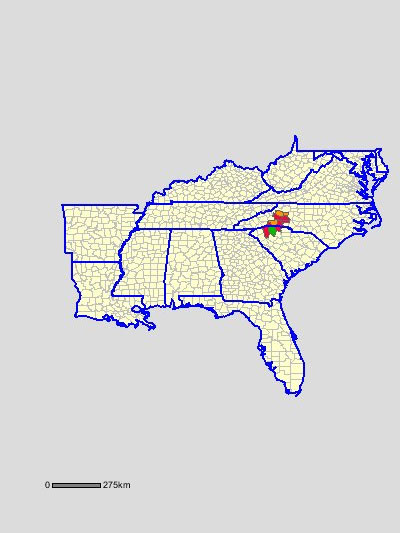 |
|
Distribution (courtesy SE Flora Atlas) |
Habitat (acidic, deciduous woods) |
|
|
Floral tube; detail of androecium and gynoecium |
Leaf (note variegation) |
|
|
Leaves (note variegation) |
Leaf (note variegation) |
|
|
Leaf (note variagation) |
Flower |
|
|
Flower (lateral view) |
Flower |
|
|
Hexastylis naniflora pollen (no "bumps") [Padget 2004] |
Hexastylis heterophylla pollen (note surface bumps) [Padget 2004] |
|
|
Hexastylis minor pollen (not surface bumps) [Padget 2004] |
Similar taxa:
Leaves of Asarum canadense may at first glance be taken for Hexastylis. However, note the distinct differences in flower structure in the images below. In contrast to Hexastylis, the flowers of Asarum canadense are conspicuously pubescent and the perianth lobes are not completely fused into a tube.
1. Sepals distinct (although touching valvately and forming a well-defined false tube); anthers each with prominent terminal appendages; styles connate in a column...Asarum
1'. Sepals connate for most of their length; anthers lacking terminal appendages; styles distinct (except sometimes at extreme base)...Hexastylis
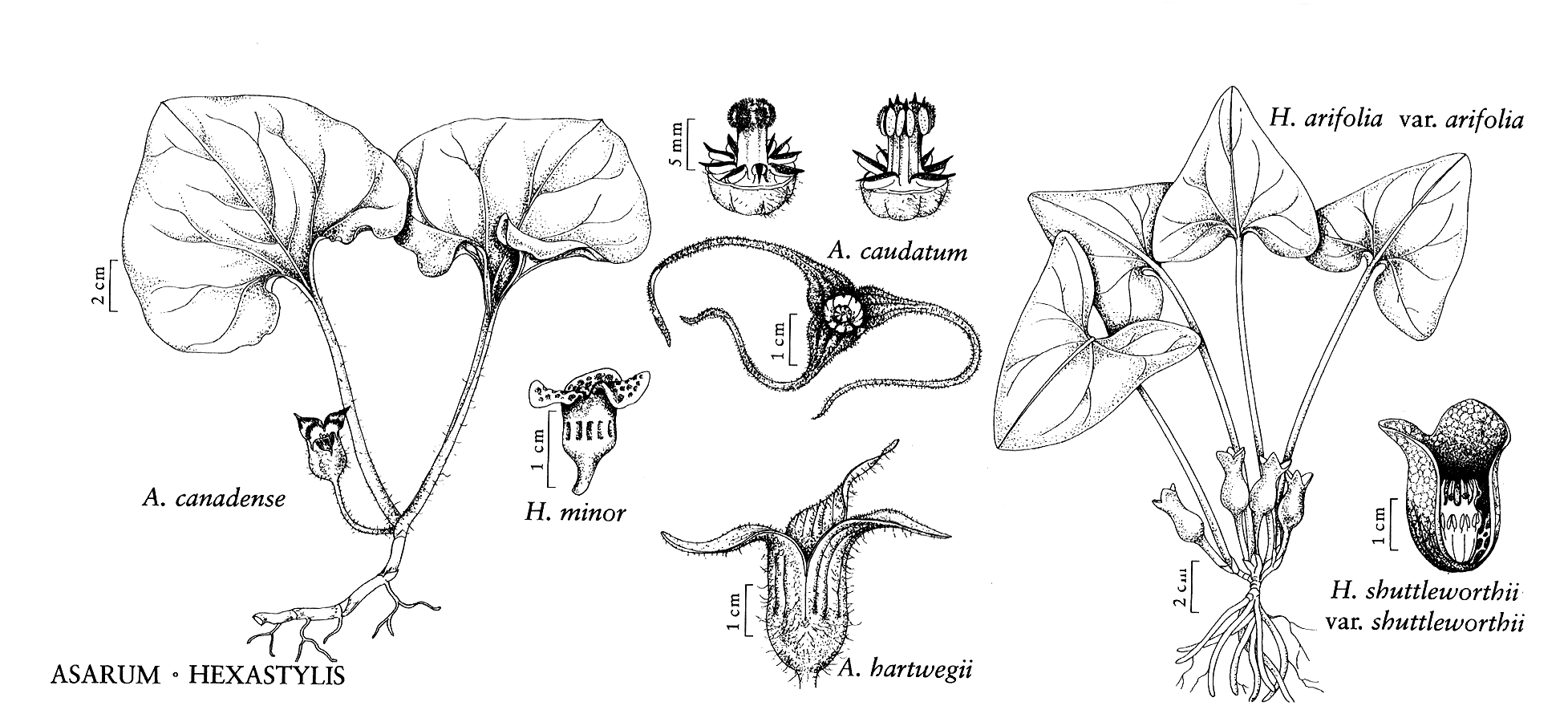
Illustration from Flora of North America (1997)
Kelly (1998 [Amer. J. Bot.]) has argued for submerging Hexastylis into Asarum, based on molecular evidence. He proposed this action as a "conservative" approach, arguing that the alternative of recognizing two clades would require over fifty new combinations. However, Kelly did not consider an additional alternative of recognizing more than two clades, which would require negligible new combinations and be consistent with the morphological/molecular distinctness he himself noted.
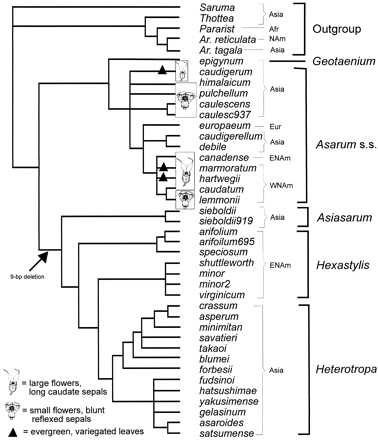
Fig. 4. The strict consensus tree of the 288 equally most parsimonious trees from the simultaneous analysis of ITS and morphological data. Taxon areas are indicated to the right. The 9-bp deletion is mapped on the tree. Sepal morphology is mapped for species of Asarum s.s.; the characters shown were not included in the morphological analysis because of continuous variation. Mapping indicates that the extremes of variation have been independently derived in North America and in Asia (Kelly 1998 [Amer. J. Bot.]).